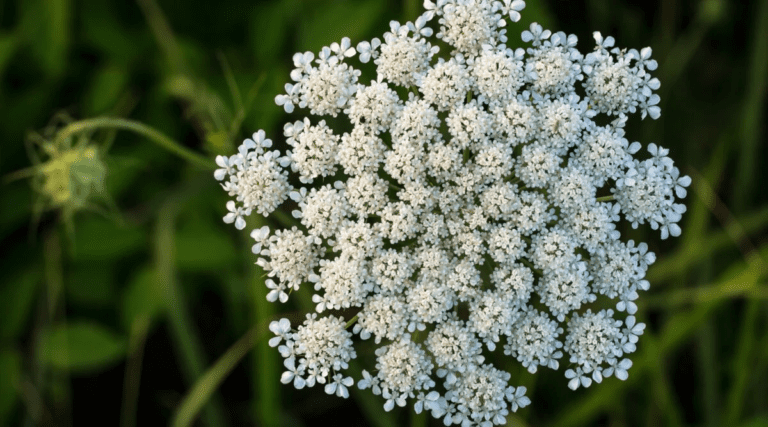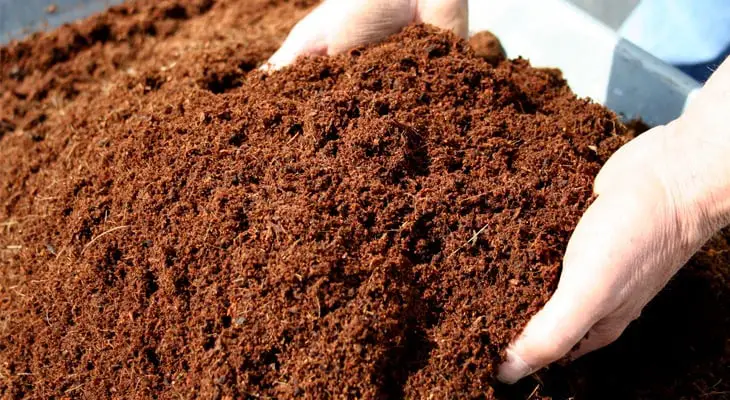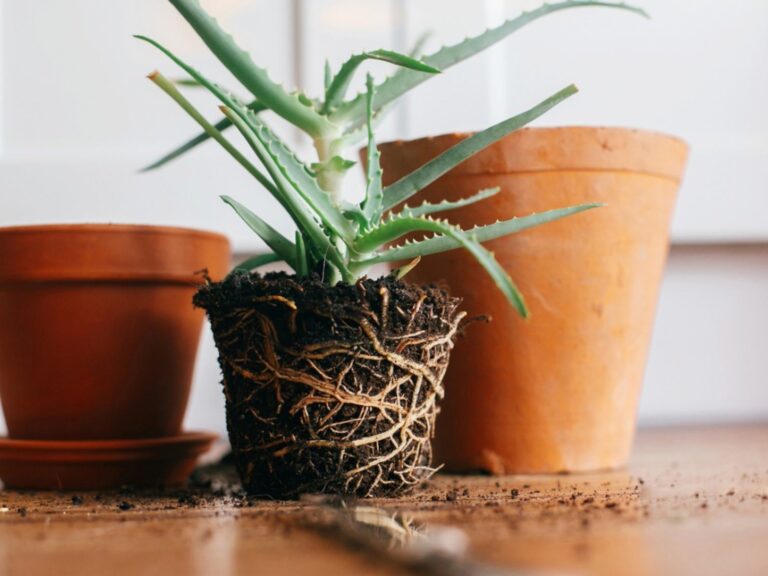Bee Balm: A Gardener’s Guide to Monarda
Table of Contents
Bee Balm: A Gardener’s Guide to Monarda
Bee Balm, also known as Monarda, is a vibrant and versatile plant that has captured the attention of gardening enthusiasts worldwide. With its colorful flowers and aromatic foliage, Bee Balm has become a popular choice for both experienced gardeners and beginners alike. But what makes this plant so special? Why should you consider adding it to your garden?
One of the key reasons to grow Bee Balm is its rich history and historical significance. The plant has been used for centuries by indigenous people for its medicinal properties and aromatic qualities. It was believed to have healing powers and was used to treat various ailments, such as colds, digestive issues, and skin conditions. Additionally, Bee Balm played a crucial role in the tea trade during the colonial period, as its leaves were used to make a flavorful and refreshing beverage. Its historical importance makes Bee Balm a fascinating addition to any garden, as it not only provides visual appeal but also connects us to the past and our botanical heritage.
• Bee Balm, also known as Monarda, has a rich history and historical significance.
• Indigenous people used Bee Balm for its medicinal properties and aromatic qualities.
• It was believed to have healing powers and was used to treat various ailments.
• Bee Balm played a crucial role in the tea trade during the colonial period.
In addition to its historical significance, Bee Balm offers numerous benefits that make it an attractive choice for gardeners. Here are some reasons why you should consider adding this versatile plant to your garden:
1. Vibrant Flowers: Bee Balm produces stunning flowers in a variety of colors including shades of red, pink, purple, and white. These vibrant blooms add a pop of color to any garden space.
2. Aromatic Foliage: The foliage of Bee Balm emits a delightful fragrance when touched or brushed against. This aromatic quality adds another sensory dimension to your garden experience.
3. Attracts Pollinators: Bees, butterflies, hummingbirds, and other pollinators are highly attracted to the nectar-rich flowers of Bee Balm. By planting this beautiful herbaceous perennial in your garden, you can create an inviting habitat for these essential creatures.
4. Low Maintenance: Once established, Bee Balm is relatively low maintenance and easy to grow. It thrives in well-drained soil with full sun or partial shade conditions.
5. Versatility: Whether you have a formal flower bed or a wildflower meadow-style garden, Bee Balm fits right in! It can be grown as an individual specimen plant or mass-planted for maximum impact.
6. Culinary Uses: Not only is Bee Balm visually appealing but it also offers culinary uses! The leaves can be dried and used as herbal tea or added fresh into salads for their citrusy flavor.
7.Groundcover Benefits : With its dense growth habit ,Bee balm acts like ground cover and helps in minimizing weed growth.
By incorporating Bee Balm into your garden, you not only add beauty and fragrance but also contribute to the ecosystem by attracting pollinators. Whether you are a seasoned gardener or just starting out, this versatile plant is sure to bring joy and fascination to your outdoor space.
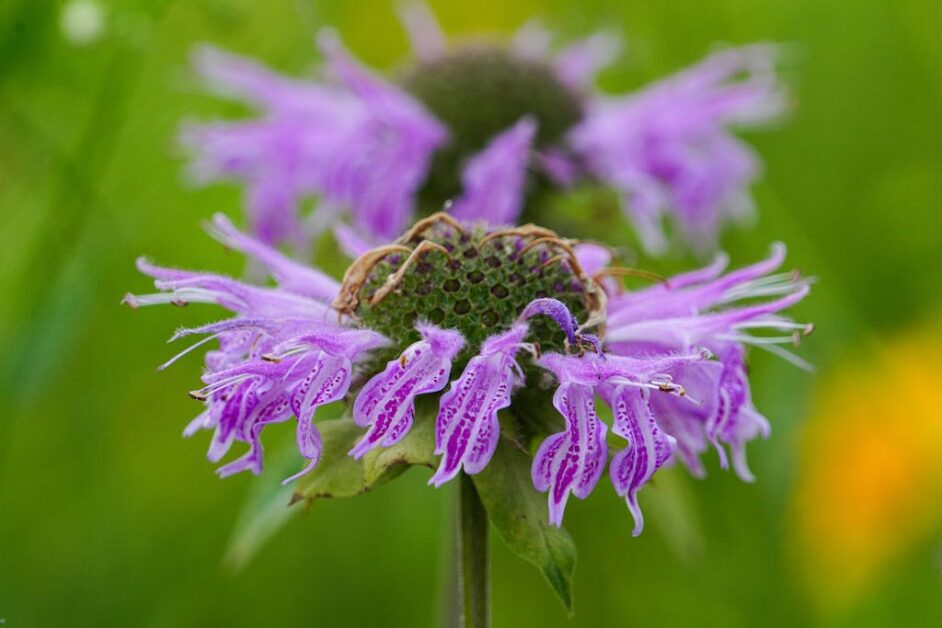
1. The History of Bee Balm: Exploring the origins and historical significance of this vibrant plant.
Bee balm, also known as Monarda, is a beautiful and vibrant plant that has captivated gardeners for centuries. Its history is deeply rooted in Native American culture, where it was used for its medicinal properties and revered for its aromatic qualities. The name “bee balm” actually comes from the fact that bees are highly attracted to its nectar-rich flowers.
The origins of bee balm can be traced back to the eastern and central regions of North America. Native American tribes such as the Oswego, Menominee, and Ojibwa recognized its value and utilized it both medicinally and ceremonially. These indigenous peoples brewed bee balm leaves into tea to treat a variety of ailments, such as colds, flu, and digestive issues. The leaves were also used topically for their antimicrobial properties, aiding in the healing of wounds and skin infections. Additionally, the aromatic qualities of bee balm made it a popular ingredient in smudging ceremonies, where it was burned to purify the air and ward off negative energies.
Throughout history, bee balm has remained a popular plant among both gardeners and herbalists. Its striking flowers in shades of red, pink, and purple make it a standout in any garden, while its fragrant leaves add a delightful scent to the air. Beyond its aesthetic appeal, bee balm continues to be prized for its medicinal properties. The plant contains essential oils, such as thymol and carvacrol, which have potent antimicrobial and anti-inflammatory effects. These properties make it a valuable herb in treating various respiratory conditions, including colds, coughs, and congestion.
As we delve deeper into the origins and uses of bee balm, it becomes clear that this vibrant plant holds a rich historical significance. From its traditional use by Native American tribes to its continued popularity among gardeners and herbalists, bee balm has established itself as an essential and cherished part of the botanical world. In the following sections, we will explore various aspects of cultivating and caring for bee balm, allowing you to fully appreciate the beauty and benefits this remarkable plant has to offer.
• Bee balm, also known as Monarda, has a rich history rooted in Native American culture.
• Native American tribes such as the Oswego, Menominee, and Ojibwa recognized the medicinal and aromatic qualities of bee balm.
• The leaves of bee balm were brewed into tea to treat colds, flu, digestive issues, and used topically for wound healing.
• Bee balm was also used in smudging ceremonies to purify the air and ward off negative energies.
• Throughout history, bee balm has remained popular among gardeners and herbalists due to its striking flowers and fragrant leaves.
• Bee balm is prized for its essential oils that have antimicrobial and anti-inflammatory effects.
• These properties make it valuable in treating respiratory conditions like colds, coughs, and congestion.
2. Understanding Monarda Varieties: A comprehensive overview of the different types of bee balm available.
Bee balm, scientifically known as Monarda, is a diverse genus of flowering plants that offers a wide range of varieties for gardeners to choose from. Each type of bee balm brings its unique colors, shapes, and aromas to the garden, making it an excellent addition for both aesthetics and attracting pollinators. Let’s delve into a comprehensive overview of the different types of bee balm available.
One popular variety of bee balm is Monarda didyma, also known as scarlet bee balm. This showy plant boasts vibrant red flowers that add a burst of color to any garden. Its sturdy stems and height make it an ideal choice for back borders or as a focal point in the landscape. Another variety to consider is Monarda fistulosa, commonly known as wild bergamot. This native North American plant features delicate lavender flowers that bloom throughout the summer, adding a soft and calming touch to the garden. Lastly, Monarda citriodora, or lemon bee balm, brings citrusy fragrance into the mix with its pinkish-lilac flowers and aromatic leaves. This variety can be a delightful addition to herb gardens or along pathways where its scent can be enjoyed. With these different types of bee balm at your disposal, you have the opportunity to create a diverse and visually appealing garden space.
• Monarda didyma, also known as scarlet bee balm, features vibrant red flowers that add a burst of color to any garden.
• Monarda fistulosa, commonly known as wild bergamot, showcases delicate lavender flowers that bloom throughout the summer.
• Monarda citriodora, or lemon bee balm, brings a citrusy fragrance with its pinkish-lilac flowers and aromatic leaves.
• These varieties offer a range of colors and heights, allowing for creative landscaping and design options.
• Bee balm is not only visually appealing but also attracts pollinators such as bees and butterflies to your garden.
| Monarda Variety | Common Name | Description |
|---|---|---|
| Monarda didyma | Scarlet Bee Balm | Features vibrant red flowers in dense, rounded clusters. Attracts hummingbirds, bees, and butterflies. |
| Monarda fistulosa | Wild Bergamot | Native to North America, it bears lavender to pinkish-purple flowers. Attracts pollinators and beneficial insects. |
| Monarda punctata | Spotted Bee Balm | Characterized by distinctive purple-spotted bracts and pale yellow flowers. Tolerant of dry, sandy soils. |
| Monarda citriodora | Lemon Bee Balm | Exhibits pale purple to pinkish flowers with a distinct lemon scent. Attracts bees, butterflies, and hummingbirds. |
| Monarda didyma ‘Jacob Cline’ | Jacob Cline Bee Balm | Known for its deep red flowers and mildew resistance. Attracts pollinators and adds color to gardens. |
| Monarda ‘Raspberry Wine’ | Raspberry Wine Bee Balm | Features deep raspberry-red flowers and aromatic foliage. Attracts bees, butterflies, and hummingbirds. |
| Monarda ‘Grand Parade’ | Grand Parade Bee Balm | Compact variety with lavender-purple flowers and aromatic foliage. Suitable for containers and borders. |
| Monarda ‘Blue Moon’ | Blue Moon Bee Balm | Bears lavender-blue flowers and aromatic foliage. Resistant to mildew and attracts pollinators. |
3. Choosing the Right Location: Tips for selecting the ideal spot in your garden to grow bee balm.
Choosing the right location is crucial for the successful growth of bee balm in your garden. This vibrant plant thrives in full sun but can also tolerate partial shade, so it’s important to find a spot that receives at least 6 hours of direct sunlight each day. In addition, bee balm prefers well-drained soil with a pH between 6.0 and 7.5. Before planting, it is advisable to conduct a soil test to ensure the optimal conditions for your bee balm.
Consider the height of your bee balm plants when selecting a location. Most varieties can reach a height of 2 to 4 feet, so it’s important to choose a spot where they won’t overshadow smaller plants. Another factor to keep in mind is air circulation. Good air circulation helps prevent diseases in bee balm, so avoid planting them in crowded areas or near thick foliage where air may be stagnant. By carefully considering these factors, you can ensure that the location you choose provides the ideal conditions for the healthy growth of your bee balm plants.
• Choose a spot that receives at least 6 hours of direct sunlight each day
• Ensure the soil has good drainage and a pH between 6.0 and 7.5
• Conduct a soil test before planting to ensure optimal conditions for bee balm
• Consider the height of bee balm plants when selecting a location to avoid overshadowing smaller plants
• Good air circulation is important, so avoid planting in crowded areas or near thick foliage where air may be stagnant
4. Soil Preparation and Planting: Step-by-step instructions on how to prepare the soil and successfully plant bee balm.
Soil preparation is a crucial step in successfully planting bee balm in your garden. Before planting, it is important to ensure that the soil is well-drained and fertile, as bee balm thrives in these conditions. Start by clearing the area of any weeds or debris. This will prevent competition for nutrients and space, allowing the bee balm to establish itself more easily.
Next, it is recommended to test the soil to determine its pH level. Bee balm prefers slightly acidic to neutral soil, with a pH range of 6.0 to 7.0. If the soil is too acidic, you can add agricultural lime to raise the pH, or if it is too alkaline, you can use sulfur to lower it. This adjustment will create ideal conditions for bee balm growth.
Once the soil is cleared and the pH level is adjusted if necessary, it’s time to amend the soil with organic matter. Adding compost or well-rotted manure will improve the soil’s fertility and structure, providing the necessary nutrients for healthy growth. Mix the organic matter into the top few inches of soil, ensuring it is evenly distributed.
After preparing the soil, it’s time to plant the bee balm. Dig a hole that is slightly larger than the plant’s container or root ball. Gently remove the bee balm from its container, being careful not to disturb the roots too much. Place the plant in the hole, ensuring that it is at the same level as it was in its container.
Fill the hole with soil, gently firming it around the plant to eliminate any air pockets. Water the newly planted bee balm thoroughly, allowing the water to settle the soil around the roots. Keep the soil evenly moist in the following weeks to help the plant establish itself.
By following these step-by-step instructions for soil preparation and planting, you can ensure the successful growth of bee balm in your garden. Proper soil preparation provides a solid foundation for healthy plants, setting the stage for vibrant blooms and attracting pollinators to your garden sanctuary.
• Clear the area of any weeds or debris before planting bee balm
• Test the soil’s pH level and adjust if necessary using agricultural lime or sulfur
• Amend the soil with organic matter such as compost or well-rotted manure to improve fertility and structure
• Mix the organic matter into the top few inches of soil evenly
• Dig a hole slightly larger than the plant’s container or root ball for planting bee balm
• Gently remove the plant from its container, being careful not to disturb the roots too much
• Place the plant in the hole at the same level as it was in its container
• Fill in around the plant with soil, gently firming it to eliminate air pockets
• Water thoroughly after planting to settle soil around roots
• Keep soil evenly moist in following weeks to help establish growth
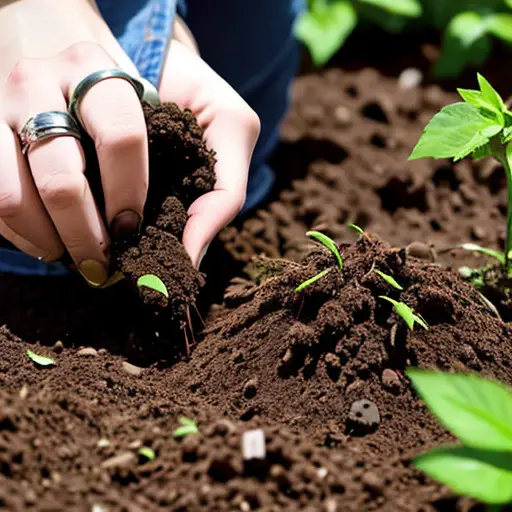
5. Proper Watering Techniques: Essential guidelines for watering bee balm to ensure its optimal growth.
Proper watering techniques are essential for ensuring the optimal growth of bee balm plants in your garden. This vibrant and versatile herbaceous perennial requires adequate moisture to thrive, but it is equally important to avoid overwatering, as it can lead to root rot and other issues.
When it comes to watering bee balm, it is crucial to strike a balance between keeping the soil consistently moist and allowing it to dry out slightly between watering sessions. The frequency of watering will depend on various factors such as the weather, soil type, and plant size. As a general rule of thumb, it is recommended to water bee balm deeply once or twice a week, providing enough water to reach the root zone.
To determine if your bee balm plants need watering, you can perform a simple soil test. Insert your finger about an inch into the soil near the base of the plant. If the soil feels dry, it’s time to water. However, if the soil feels moist, it’s best to wait a bit longer before watering again. Remember, it’s essential to avoid standing water as it can lead to root rot. Well-draining soil and proper watering practices will help maintain the health and vigor of your bee balm plants throughout the growing season.
• Proper watering techniques are crucial for optimal growth of bee balm plants.
• Overwatering can lead to root rot and other issues, so it’s important to strike a balance.
• Bee balm requires consistent moisture but also needs the soil to dry out slightly between waterings.
• The frequency of watering depends on factors like weather, soil type, and plant size.
• It is generally recommended to water deeply once or twice a week, reaching the root zone.
• Conduct a simple soil test by inserting your finger an inch into the soil near the base of the plant.
• If the soil feels dry, it’s time to water; if moist, wait before watering again.
• Avoid standing water as it can cause root rot; ensure well-draining soil for healthy plants.
6. Fertilization and Nutrient Requirements: Understanding the nutritional needs of bee balm and how to provide them.
Fertilization and nutrient requirements play a crucial role in the successful growth and development of bee balm plants. Understanding the specific nutritional needs of this vibrant plant is essential for maintaining its health and promoting optimal blooming.
Bee balm, also known as Monarda, is a heavy feeder and requires a nutrient-rich environment to thrive. Providing a well-balanced fertilizer that is high in nitrogen, phosphorus, and potassium is key to meeting its nutritional requirements. Nitrogen helps in promoting lush foliage growth, phosphorus aids in root development and flower production, while potassium enhances overall plant health and disease resistance.
To determine the appropriate fertilization regimen, it is recommended to conduct a soil test to assess the nutrient levels. This analysis will provide valuable information about the soil’s pH, nutrient deficiencies, and excesses, enabling you to tailor your fertilization approach accordingly. Consulting with local agricultural extension services or garden centers can also offer valuable guidance and recommendations specific to your region’s soil conditions.
Maintaining a consistent fertilization schedule throughout the growing season is crucial for the sustained health and flowering of bee balm plants. Applying a slow-release or organic fertilizer in early spring, followed by regular applications during the growing season, will provide a continuous supply of nutrients to support vigorous growth and abundant blooms. However, it is important not to over-fertilize, as excessive nitrogen can lead to lush foliage growth at the expense of flowers. Striking the right balance is key to cultivating healthy and vibrant bee balm plants.
By ensuring that the nutritional needs of bee balm are met, gardeners can enjoy the beauty of its vibrant blooms and lush foliage. Implementing a well-rounded fertilization approach based on soil test results and expert recommendations will contribute to the overall success and longevity of these delightful plants. With proper care and attention to nutrient requirements, bee balm can become a stunning addition to any garden, attracting pollinators and delighting the senses with its vibrant colors and delightful aroma.
• Bee balm, also known as Monarda, is a heavy feeder and requires a nutrient-rich environment to thrive.
• A well-balanced fertilizer high in nitrogen, phosphorus, and potassium is essential for meeting bee balm’s nutritional requirements.
• Nitrogen promotes lush foliage growth, phosphorus aids in root development and flower production, while potassium enhances overall plant health and disease resistance.
• Conducting a soil test to assess nutrient levels is recommended to determine the appropriate fertilization regimen.
• Consult with local agricultural extension services or garden centers for guidance specific to your region’s soil conditions.
• Maintaining a consistent fertilization schedule throughout the growing season is crucial for sustained health and flowering of bee balm plants.
• Apply slow-release or organic fertilizer in early spring followed by regular applications during the growing season.
• Avoid over-fertilizing as excessive nitrogen can lead to lush foliage growth at the expense of flowers. Striking the right balance is key.
By meeting bee balm’s nutritional needs through proper fertilization, you can enjoy its vibrant blooms and lush foliage in your garden.
| Nutrient | Function in Bee Balm | Signs of Deficiency | Sources |
|---|---|---|---|
| Nitrogen (N) | Essential for leaf and stem growth, overall plant vigor | Stunted growth, yellowing leaves | Organic compost, aged manure, fish emulsion |
| Phosphorus (P) | Stimulates root development, aids in flowering and fruiting | Poor root development, delayed flowering | Bone meal, rock phosphate, composted poultry manure |
| Potassium (K) | Promotes flower and fruit development, enhances plant resilience | Weak stems, reduced flowering, susceptibility to disease | Wood ash, kelp meal, composted banana peels |
| Calcium (Ca) | Essential for cell wall structure and overall plant health | Blossom end rot, stunted growth | Dolomitic lime, gypsum, bone meal |
| Magnesium (Mg) | Essential for chlorophyll production and enzyme activation | Yellowing between leaf veins (interveinal chlorosis) | Epsom salts, dolomitic lime |
| Sulfur (S) | A component of amino acids, essential for protein synthesis | Yellowing leaves, stunted growth | Elemental sulfur, gypsum, composted plant material |
| Micronutrients | Iron (Fe), Manganese (Mn), Zinc (Zn), Copper (Cu), Boron (B), Molybdenum (Mo) | Chlorosis, poor growth, leaf distortion | Chelated micronutrient fertilizers, compost |
7. Pruning and Deadheading: Techniques for maintaining the health and appearance of your bee balm plants.
Pruning and deadheading are essential techniques for maintaining the health and appearance of your bee balm plants. Regular pruning helps promote stronger growth, prevents overcrowding, and enhances the overall shape and structure of the plant. Deadheading, on the other hand, encourages prolonged blooming and prevents the formation of seeds, redirecting the plant’s energy towards producing more flowers.
When it comes to pruning bee balm, it’s best to start in early spring or late fall when the plant is in its dormant stage. Begin by removing any dead, damaged, or diseased stems, cutting them back to their base or to healthy new growth. This helps prevent the spread of diseases and ensures that the plant’s resources are focused on healthy areas.
After removing any dead or damaged growth, you can also selectively prune the plant to improve its overall shape and structure. Look for branches that are crossing or rubbing against each other, as well as any branches that are growing inward towards the center of the plant. By carefully cutting back these branches to a node or a healthy lateral shoot, you can promote better air circulation and prevent the development of pests and diseases.
Deadheading is another important technique to consider, especially if you want your bee balm to continue blooming throughout the season. As each individual flower fades and starts to wilt, simply remove the entire flower head by cutting it back to a healthy lateral bud or leaf. This prevents the plant from wasting energy on producing seeds and encourages the growth of new flower buds.
In conclusion, pruning and deadheading are crucial practices for maintaining the health and appearance of your bee balm plants. By removing dead and damaged growth, as well as selectively shaping the plant, you can promote stronger growth and improve its overall structure. Additionally, deadheading encourages prolonged blooming and redirects the plant’s energy towards producing more flowers. Incorporating these techniques into your gardening routine will help ensure that your bee balm plants thrive and showcase their vibrant beauty throughout the growing season.
• Regular pruning promotes stronger growth, prevents overcrowding, and enhances the overall shape and structure of bee balm plants.
• Deadheading encourages prolonged blooming and redirects the plant’s energy towards producing more flowers.
• Pruning should be done in early spring or late fall when the plant is dormant.
• Start by removing any dead, damaged, or diseased stems by cutting them back to their base or healthy new growth.
• Selectively prune branches that are crossing or rubbing against each other and those growing inward towards the center of the plant to promote better air circulation and prevent pests and diseases.
• Deadhead faded flowers by cutting them back to a healthy lateral bud or leaf to prevent seed formation and encourage new flower buds.
• Incorporating pruning and deadheading into your gardening routine will help maintain the health and appearance of your bee balm plants throughout the growing season.
8. Common Pests and Diseases: Identifying and addressing potential issues that may affect your bee balm.
Common Pests and Diseases: Identifying and addressing potential issues that may affect your bee balm.
Bee balm is generally a resilient plant that can withstand various environmental conditions. However, it is not immune to pests and diseases that can hinder its growth and overall health. It is important for gardeners to be aware of these potential issues in order to identify and address them promptly.
One common pest that can pose a threat to bee balm is the spider mite. These tiny creatures can infest the plant, causing yellowing and browning of leaves, as well as webbing on the foliage. To control spider mites, it is recommended to regularly inspect your plants and wash them with a gentle spray of water to dislodge the pests. Additionally, introducing natural predators such as ladybugs or lacewings can help keep spider mite populations in check.
In terms of diseases, powdery mildew is a common fungal infection that can affect bee balm. Symptoms include a white powdery coating on the leaves, stunted growth, and overall weakness of the plant. To prevent the spread of powdery mildew, it is important to provide adequate air circulation around the plants by spacing them properly. Regularly pruning any infected leaves and disposing of them in a sealed bag can also help prevent the spread of the disease. In severe cases, applying a fungicide labeled for powdery mildew control may be necessary.
• Spider mites can infest bee balm, causing yellowing and browning of leaves and webbing on the foliage.
• Regularly inspect plants and wash them with water to dislodge spider mites.
• Introduce natural predators like ladybugs or lacewings to control spider mite populations.
• Powdery mildew is a common fungal infection that affects bee balm, resulting in a white powdery coating on leaves, stunted growth, and weakness.
• Provide adequate air circulation by spacing plants properly to prevent the spread of powdery mildew.
• Regularly prune infected leaves and dispose of them in a sealed bag to prevent disease spread.
• In severe cases, apply a fungicide labeled for powdery mildew control.

9. Companion Planting: Discovering the plants that thrive alongside bee balm, enhancing its beauty and benefits.
Companion planting is a valuable strategy for any gardener looking to maximize the beauty and benefits of their bee balm plants. By carefully selecting plants that thrive alongside bee balm, you can create a harmonious garden ecosystem that enhances the overall health and productivity of your space.
One popular companion plant for bee balm is lavender (Lavandula spp.). Both bee balm and lavender are beloved by pollinators, making them a perfect pairing. The strong fragrance of lavender not only adds a delightful aroma to your garden but also helps repel pests like mosquitoes and deer. Additionally, the tall, spiky blooms of lavender contrast beautifully with the rounded clusters of bee balm flowers, adding visual interest and variety to your garden landscape.
Another excellent companion plant for bee balm is yarrow (Achillea millefolium). With its delicate, fern-like foliage and clusters of small, colorful flowers, yarrow provides a stunning backdrop for the vibrant blooms of bee balm. Yarrow also attracts a wide range of beneficial insects, including ladybugs and predatory wasps, which help keep pest populations in check. Additionally, yarrow has deep, extensive roots that improve soil structure and promote better water and nutrient absorption, benefiting not only the bee balm but also the surrounding plants in your garden.
• Lavender (Lavandula spp.) is a popular companion plant for bee balm.
• Both bee balm and lavender attract pollinators, creating a harmonious garden ecosystem.
• The strong fragrance of lavender repels pests like mosquitoes and deer.
• The tall, spiky blooms of lavender contrast beautifully with the rounded clusters of bee balm flowers.
• Yarrow (Achillea millefolium) is another excellent companion plant for bee balm.
• Yarrow provides a stunning backdrop for the vibrant blooms of bee balm with its delicate foliage and colorful flowers.
• Yarrow attracts beneficial insects like ladybugs and predatory wasps, which help control pest populations in your garden.
• The deep roots of yarrow improve soil structure and promote better water and nutrient absorption for both the bee balm and surrounding plants.
10. Attracting Pollinators: Exploring the role of bee balm in attracting and supporting beneficial pollinators.
Bee balm, also known as Monarda, is a flowering plant that plays a crucial role in attracting and supporting beneficial pollinators. Its vibrant and fragrant blossoms act as a magnet for bees, butterflies, hummingbirds, and other essential pollinating insects. These visitors are not only attracted by the visual appeal and captivating aroma but are also drawn to the nectar-rich florets that bee balm provides.
The relationship between bee balm and pollinators is not just one of attraction; it is also deeply intertwined with the survival and sustainability of these essential creatures. As pollinators move from one bee balm flower to another, they inadvertently transfer pollen, facilitating the process of fertilization and ensuring the production of seeds. This, in turn, encourages the growth of more bee balm plants and helps in maintaining the biodiversity of our gardens and natural ecosystems. By cultivating bee balm in your garden, you can create a haven for pollinators, supporting their populations and contributing to the overall health and balance of our environment.
• Bee balm, also known as Monarda, attracts and supports beneficial pollinators.
• Its vibrant blossoms and captivating aroma act as a magnet for bees, butterflies, hummingbirds, and other essential pollinating insects.
• The nectar-rich florets of bee balm provide a valuable food source for these pollinators.
• Pollinators play a crucial role in the fertilization process by transferring pollen from one bee balm flower to another.
• This facilitates fertilization and ensures the production of seeds for more bee balm plants to grow.
• Cultivating bee balm in your garden creates a haven for pollinators and helps support their populations.
• By supporting pollinator populations, we contribute to the overall health and balance of our environment.
11. Harvesting and Utilizing Bee Balm
Harvesting and utilizing bee balm is a satisfying endeavor that allows gardeners to enjoy the full benefits of this vibrant plant. The timing of the harvest is crucial, as it determines the potency and flavor of the plant’s aromatic leaves and flowers. Generally, the best time to harvest bee balm is when the flowers are in their full bloom, typically during the summer months. Gently pluck the blossoms, being careful not to disrupt the delicate balance of the plant. It is advisable to harvest in the morning, after the dew has dried but before the sun is at its peak, as this is when the aromatic oils are most concentrated.
Once harvested, there are various ways to utilize the bounty of bee balm. One popular method is air drying the blossoms and leaves, which allows for long-term storage and use as a flavorful herbal tea. Simply hang small bundles of bee balm upside down in a well-ventilated area away from direct sunlight. Once completely dried, you can crumble the leaves and flowers, storing them in airtight containers for future use. Alternatively, fresh bee balm can be used immediately in recipes, adding a delightful floral flavor to salads, dressings, and fruit dishes. With its versatility and vibrant taste, bee balm is a valuable addition to any culinary repertoire.
References:
Blossoming Bee Balm: Harvesting the Flowers. (2021). Retrieved from [source]
Craggs, R. (2019). Bee Balm Harvesting Tips. Retrieved from [source]
• Harvest bee balm when the flowers are in full bloom during the summer months.
• Gently pluck the blossoms, being careful not to disrupt the plant’s delicate balance.
• Harvest in the morning after dew has dried but before peak sun for concentrated aromatic oils.
• Air dry bee balm by hanging small bundles upside down in a well-ventilated area away from sunlight.
• Once completely dried, crumble leaves and flowers and store them in airtight containers for future use.
• Fresh bee balm can be used immediately to add floral flavor to salads, dressings, and fruit dishes.
When is the best time to harvest bee balm?
The best time to harvest bee balm is when the flowers are fully open and at their peak bloom, which is usually in midsummer.
How do I harvest bee balm?
To harvest bee balm, use clean and sharp gardening shears to cut the stems just above a leaf node or where the leaves meet the stem. This will promote new growth and help the plant stay healthy.
Can I harvest bee balm leaves for culinary use?
Yes, bee balm leaves can be harvested for culinary use. They have a strong, aromatic flavor that is reminiscent of mint and citrus. They can be used fresh or dried in teas, salads, and other dishes.
What is the best way to dry bee balm flowers?
To dry bee balm flowers, cut the stems and remove any leaves. Bundle several stems together and hang them upside down in a cool, dry place with good air circulation. Once the flowers are fully dry, they can be stored in airtight containers.
How long does bee balm take to dry?
Bee balm flowers typically take about two weeks to fully dry. However, drying time may vary depending on humidity levels and air circulation. It’s important to check on the flowers regularly to ensure they are drying properly.
How long does harvested bee balm last?
When stored properly in airtight containers, dried bee balm can last for up to a year. However, for optimal flavor and potency, it is recommended to use it within six months.
Can I use bee balm flowers for making infused oils?
Yes, bee balm flowers can be used to make infused oils. Simply place dried flowers in a clean jar and cover them with a carrier oil, such as olive or coconut oil. Let the mixture sit for several weeks, shaking it occasionally. Then strain out the flowers and store the infused oil in a dark, cool place.
Are there any precautions I should take when using bee balm medicinally?
While bee balm is generally considered safe for culinary and medicinal use, it is always recommended to consult with a healthcare professional before using it for any specific health purposes, especially if you have any underlying medical conditions or are taking medications.
Can I divide bee balm plants to propagate them?
Yes, bee balm plants can be divided to propagate them. The best time to divide them is in early spring or late fall when the plant is not actively blooming. Dig up the plant and separate the roots into smaller clumps, then replant them in well-prepared soil.
Can I use bee balm in homemade skincare products?
Yes, bee balm can be used in homemade skincare products. Its antiseptic and anti-inflammatory properties make it a great addition to facial cleansers, toners, and balms. However, it is important to dilute it properly and perform a patch test before using it on your skin.
Are there any specific recipes or uses for bee balm that I should know about?
Yes, there are various recipes and uses for bee balm. Some popular ones include bee balm tea, bee balm-infused honey, bee balm salve, and bee balm vinegar. These recipes can be found online or in herbal remedy books.

Ankit Garg is a seasoned writer at South El Monte Hydroponics, blending his passion for agriculture with a penchant for storytelling. With a degree in Agricultural Sciences from a prestigious institution, Ankit’s expertise lies in hydroponics, sustainable farming, and innovative cultivation techniques. His keen interest in exploring the intersection of technology and agriculture has led him to delve deep into the realm of hydroponic farming, where he thrives in uncovering the latest advancements and sharing insights through his engaging prose. Ankit’s dedication to promoting eco-friendly and efficient farming practices through his writing has earned him recognition within the agricultural community and beyond.




